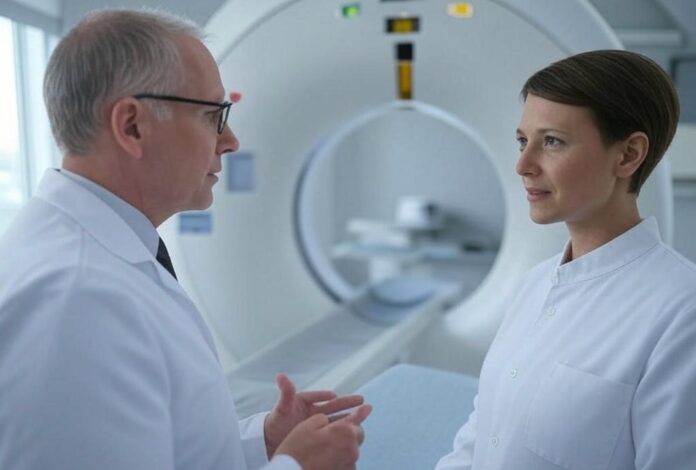Introduction: Why CT Protocol Optimization Matters
Computed Tomography (CT) is a cornerstone of modern diagnostic imaging, providing critical information across nearly every medical specialty. However, maximizing the value of CT — both clinically and financially — requires more than just advanced hardware. The real secret lies in the optimization of CT protocols.
When CT protocols are carefully developed, implemented, and updated, they lead to higher diagnostic accuracy, improved patient safety, streamlined workflows, and lower operational costs. To achieve this, radiology departments must engage in continuous training and refer to specialized scientific resources for radiologists that offer the latest guidance on best practices.
What Is Protocol Optimization in CT?
Protocol optimization refers to the process of fine-tuning all parameters involved in a CT examination — including scan range, slice thickness, contrast use, radiation dose, and post-processing settings — to best answer the clinical question while minimizing patient risk and resource consumption.
Optimized protocols ensure that every scan is:
- Clinically appropriate
- Performed at the lowest reasonable radiation dose (following ALARA principles)
- Technically consistent, regardless of operator or shift
- Efficient, reducing the need for repeat scans and minimizing patient discomfort
The Cost of Non-Optimized CT Protocols
When CT protocols are outdated, inconsistent, or poorly applied, the consequences are serious:
- Higher Radiation Exposure: Unnecessary scanning parameters expose patients to avoidable risks.
- Increased Repeat Scans: Poor image quality often forces re-scans, wasting time, contrast materials, and machine capacity.
- Delayed Diagnoses: Suboptimal imaging can hinder clinical decision-making, affecting patient outcomes.
- Reduced Efficiency: Non-standardized workflows slow down scan throughput and reporting times.
- Financial Losses: Increased operational costs, lower departmental productivity, and potential medico-legal liabilities.
In essence, non-optimized protocols silently erode the return on investment (ROI) of even the most expensive CT equipment.
Key Strategies for CT Protocol Optimization
1. Standardization Across the Department
Developing a standardized protocol library ensures that regardless of who performs the scan, consistent parameters are used. Standardization:
- Reduces variability in image quality
- Enhances workflow predictability
- Simplifies technologist training and competency assessments
- Facilitates auditing and quality assurance programs
2. Dose Optimization
Following principles like ALARA (As Low As Reasonably Achievable), radiology teams must:
- Tailor tube current and voltage to patient size and clinical indication
- Utilize automatic exposure control (AEC) systems
- Apply iterative reconstruction techniques for noise reduction at lower doses
- Use organ-specific dose modulation when appropriate
Low-dose protocols are critical not only for regulatory compliance but also for patient safety and public trust.
3. Clinical Indication–Driven Protocols
Every CT exam should be driven by a clear clinical question. Protocols must be adapted to:
- The body region being examined
- The clinical scenario (e.g., trauma vs. routine screening)
- Patient-specific factors such as age, body habitus, and comorbidities
Adapting protocols minimizes unnecessary exposures and ensures scans are truly diagnostic.
4. Continuous Education and Quality Improvement
Optimization is not a one-time event. It requires ongoing:
- Monitoring of protocol performance metrics
- Regular updates based on new technologies or guidelines
- Staff training sessions on protocol changes and rationale
Access to up-to-date scientific resources for radiologists ensures that teams stay informed about evolving standards and innovations.
Real-World Impact: Case Study on Protocol Optimization
At a mid-sized urban hospital, a comprehensive CT protocol optimization project was launched:
- Protocols were revised across thoracic, abdominal, and neuroimaging categories.
- Staff underwent targeted re-training on dose reduction strategies.
- Image quality metrics and radiation doses were monitored pre- and post-optimization.
Results after six months:
- Average radiation dose per scan reduced by 32%
- Repeat scan rates dropped by 18%
- Mean exam time decreased by 12%, increasing daily scan capacity
- Radiologist satisfaction with image quality increased significantly
The hospital not only improved patient care but also saved an estimated $250,000 annually through reduced contrast use, fewer re-scans, and better throughput.
Common Mistakes in CT Protocol Management
Even well-intentioned radiology departments often make errors such as:
- Allowing protocol drift: Over time, individual technologists may introduce variations that degrade quality.
- Neglecting periodic reviews: Protocols need regular assessment to remain aligned with best practices.
- Ignoring new capabilities: Upgraded scanner features require protocol adjustments to fully leverage new technologies.
- Failing to involve radiologists: Optimizations should be a collaborative effort between technologists and interpreting physicians.
Avoiding these pitfalls requires a culture of continuous improvement and proactive education.
The Role of Scientific Resources in Protocol Excellence
Access to high-quality scientific resources for radiologists is essential for:
- Learning evidence-based optimization strategies
- Understanding the latest recommendations for dose management
- Reviewing case studies and real-world examples of successful protocol revisions
- Keeping abreast of changes in guidelines from bodies like the American College of Radiology (ACR) or the European Society of Radiology (ESR)
Investing in education is investing in clinical excellence — and financial sustainability.
Protocol Optimization as a Strategic Imperative
In today’s healthcare environment, radiology departments are under pressure to deliver higher-quality imaging with faster turnaround times and at lower costs. Optimizing CT protocols is one of the most powerful — and often overlooked — ways to meet these demands.
It’s not just a technical exercise. It’s a strategic imperative that impacts:
- Patient safety
- Diagnostic accuracy
- Departmental efficiency
- Institutional reputation
- Financial viability
By committing to protocol optimization and continuous learning through scientific resources for radiologists, radiology leaders can unlock the full potential of their CT investments, offering better care while safeguarding operational success.
Did you find this helpful? Check out our other helpful articles on our website.
Read Also
- Revolutionizing Patient Engagement: Innovative Solutions for Improved Care and Treatment SuccessNavigating healthcare system can often feel overwhelming for patients. Between appointments, prescriptions, and treatment regimens, it’s easy for crucial details to get lost in the shuffle. That’s why effective patient engagement and support solutions are more important than ever. Companies like Serva Health, with their pharma hub services, are stepping up to ensure that patients… Read more: Revolutionizing Patient Engagement: Innovative Solutions for Improved Care and Treatment Success
- On-Demand Healthcare Staffing As A Cost-Saving StrategyThis is an exciting and challenging time for the healthcare industry. Technology is advancing almost faster than humans can keep pace. New legislation is creating fresh challenges for the future of healthcare, and the shifting population demographic continues to place more pressure on healthcare facilities. Amidst these changes, healthcare facilities are facing a critical staffing… Read more: On-Demand Healthcare Staffing As A Cost-Saving Strategy
- Automated Healthcare Software Solutions: How Intelligent Platforms Are Redefining Clinical, Administrative, and Operational ExcellenceThe healthcare industry is undergoing a seismic transformation. Rising patient volumes, value-based care models, staffing shortages, and complex regulatory demands have prompted organizations to look beyond traditional tools and embrace advanced software automation. As providers search for innovative partners capable of tailoring these sophisticated systems to real-world workflows, many turn to MCSI (Managed Care Systems,… Read more: Automated Healthcare Software Solutions: How Intelligent Platforms Are Redefining Clinical, Administrative, and Operational Excellence
- The Benefits of Contract Labor Staffing in HealthcareThe most successful healthcare facilities today aren’t just reacting to crises—they are building workforce resilience to withstand them. Unpredictable patient demand, coupled with persistent nursing shortages, has made the traditional staffing model obsolete. Relying on mandatory overtime to cover a sudden surge in capacity is a recipe for high turnover and rising employee burnout relief… Read more: The Benefits of Contract Labor Staffing in Healthcare
- Why Whole Slide Imaging Shapes the Future of Digital PathologyWhole slide imaging has become one of the most important developments in modern pathology. It changes how tissue is examined, how cases are shared and how pathologists collaborate with the wider care team. More than a technological upgrade, it represents a shift in how laboratories think about their workflow, their storage needs and the tools… Read more: Why Whole Slide Imaging Shapes the Future of Digital Pathology
- Management Reinforcement for Healthcare Providers in a Shifting SystemHealthcare is changing faster than ever. So, providers are feeling the pressure to keep up. New technology, changing patient needs, and constant rule updates make it tough for managers to stay on top. Strong leadership helps teams work better, give great care, and stay happy in their jobs. Here’s how healthcare leaders can strengthen their… Read more: Management Reinforcement for Healthcare Providers in a Shifting System
- Why Effective Disinfection Remains the Foundation of Public HealthFrom hospitals and schools to transport hubs and food production sites, disinfection is central to breaking the chain of infection and protecting community health. The COVID-19 pandemic highlighted how crucial surface hygiene and environmental control are in reducing the spread of harmful microorganisms. Yet, beyond emergency response, routine and validated disinfection practices remain the cornerstone… Read more: Why Effective Disinfection Remains the Foundation of Public Health
- How to Navigate Your Medical Assistant Career PathBecoming a medical assistant can feel both exciting and a little stressful. This job lets you work closely with doctors and other healthcare workers to help patients. But with so many different paths to take, it can be hard to know where to start or how to plan your career. Wouldn’t it be nice to… Read more: How to Navigate Your Medical Assistant Career Path









